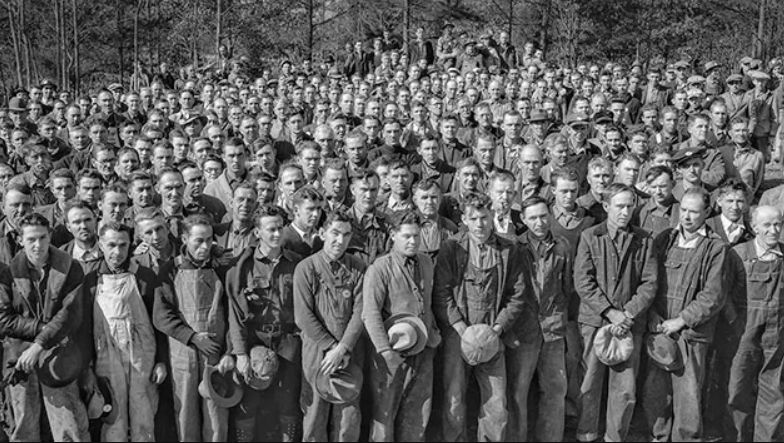
Dear Minister of Justice,
I am writing to seek clarification on New Zealand’s current stance regarding psychedelic substances, particularly in the context where these substances are considered spiritual sacraments.
The New Zealand Bill of Rights Act states in Section 13 that “Everyone has the right to freedom of thought, conscience, religion, and belief”. Section 15 states that “Every person has the right to manifest that person’s religion or belief in worship, observance, practice, or teaching, either individually or in community with others, and either in public or in private”.
A fair reading of these sections suggests that New Zealanders have the right to use spiritual sacraments.
Indeed, this is already true with regards to the religious use of wine in the Christian Eucharist. New Zealand Anglicans use wine as a spiritual sacrament, the psychoactive ingredient being, of course, alcohol. But there are many other substances that serve as spiritual sacraments in the religious and spiritual traditions of the world.
The use of psychedelics like psilocybin mushrooms, ayahuasca and other entheogens has been deeply rooted in various spiritual and religious practices around the world for millennia. These practices often regard these substances not merely as drugs but as sacraments crucial for spiritual exploration, healing and connection with the divine or the deeper self.
The Eleusinian Mysteries were the most famous of the mystery schools that characterised pre-Christian European spirituality, running for 2,000 years and attracting anyone who was anyone in ancient Greece or Rome: Socrates, Plato, Sophocles, Aeschylus, Euripides, Thucydides, Herodotus, Marcus Aurelius and the Emperor Julian were all known or believed to have participated.
Cicero wrote of them that “Though Athens brought forth numerous divine things, yet she never created anything nobler than those sublime Mysteries through which we became gentler and have advanced from a barbarous and rustic life to a more civilised one, so that we not only live more joyfully but also die with a better hope.”
Initiation into these mysteries involved the consumption of a drink known as kykeon. The mycologist R Gordon Wasson, the chemist Albert Hoffmann and the historian Carl Ruck have argued that the kykeon contained an entheogenic substance. Their book Road to Eleusis made a compelling argument that the use of psychedelics as spiritual sacraments played an integral role in the creation of Western Civilisation.
Robert Graves believed that linguistic evidence revealed the kykeon to include some kind of mushroom. Terence McKenna supported this assertion, pointing out that psilocybin-containing mushrooms had both the capacity to cause extreme psychospiritual change and the safety profile that would have allowed thousands to use them every year without getting a reputation for being dangerous.
The claimed benefits of the Eleusinian Mysteries included losing one’s fear of death, gaining a belief in the afterlife, learning to understand the will of the divine and improvement of moral rectitude. These benefits are very similar to those claimed by modern psychedelic users – Erowid.org lists hundreds of mystical experiences of people who have taken psilocybin.
It’s apparent from these arguments that the use of psychedelics as spiritual sacraments played a role in the moral and civil development of Western peoples during our greatest ages. But the potential of psychedelics to induce spiritual insight is not limited to the ancient age or to the West.
The Marsh Chapel Experiment conducted by Walter Pahnke in 1962 discovered that psilocybin is capable of inducing powerful spiritual experiences in modern people. A long-term follow-up questionnaire found “experimental subjects wrote that the experience helped them to recognise the arbitrariness of ego boundaries, increase their depth of faith, increase their appreciation of eternal life [etc.]”
One of the participants in the Marsh Chapel Experiment noted in the long-term follow-up, regarding death, “I’ve been there. Been there and come back. And it’s not terrifying, it doesn’t hurt.” Such an insight is profoundly spiritual. Many of the other participants made similar observations. One remembered their experience as “one of the high points of their spiritual life”.
This experiment demonstrated that the link between psilocybin and spirituality can be established within a modern, scientific paradigm. More recent research has supported this, with a 2024 paper in Current Psychology finding that “psychedelic use is linked with a variety of subjective indicators of spiritual growth, including stronger perceived connections with the divine, a greater sense of meaning, increased spiritual faith, increased engagement in religious and spiritual practices, an increase in feelings of unity and self-transcendence, positive changes in worldview, increased connectedness with others, and reduced fear of death”.

Albert Hofmann described how the teonanacatl of the Aztecs was a psilocybin-containing mushroom. This teonanacatl, or “flesh of the gods”, was used as a spiritual sacrament to commune with the divine. Indigenous North Americans have used psilocybin-containing mushrooms as entheogens for thousands of years. The Aztec use of entheogens, including both mushrooms and others, is extensive.
R Gordon Wasson believed that the soma referenced in the Rig Veda was the fly agaric amanita muscaria. Supporting his contention was the fact that Siberian shamans were still using this mushroom for spiritual purposes. More recently, Russian researchers have found evidence suggesting the active ingredient in soma was psilocybe cubensis. In either case, psychoactive mushrooms have a history of religious and spiritual use in India as well.
Although the record of historical psychedelic use is not as strong in Europe as it is in the Americas and Asia, there is still evidence of magic mushroom use in Spain from some 6,000 years ago.
In New Age spirituality, psychedelics are used extensively. In Nelson, where I am from, it’s common to use psychedelics as spiritual sacraments outside the purview of any institutional authority. “Mushroom Season” describes the time of the year beginning in early winter and ending around midwinter when psilocybin-containing mushrooms are foraged, dried and consumed as spiritual sacraments.
In light of all this, significant questions arise concerning the human rights implications of New Zealand’s drug laws as they pertain to psychedelic substances. Once it is understood that psychedelics are spiritual sacraments, there’s a compelling argument to be made that restrictions on their use infringe upon the freedom of religion and belief, a fundamental human right protected under various international treaties to which New Zealand is a signatory.
Article 18 of the Universal Declaration of Human Rights states that “everyone has the right to freedom of religion” and “to manifest his belief in practice”. Given the widespread use of psychedelics as spiritual sacraments throughout time and space, this right must surely encompass the right to use psychedelics to manifest spiritual belief in practice.
An appropriate reading of the New Zealand Bill of Rights Act suggests that the right to use psychedelics for spiritual purposes is guaranteed. In reality, however, a hierophant who wanted to conduct a sacramental ritual akin to the Eleusinian Mysteries could potentially face life imprisonment for the supply of Class A drugs.
This letter seeks to understand how current New Zealand drug laws reconcile with the rights of individuals to practice their spirituality freely, especially when such practices involve substances that are currently classified under the Misuse of Drugs Act.
The laws against the use of psychedelics for spiritual purposes reflect, to a major extent, the historical Christian dogma against pharmakeia. This is the same dogma that led the Christian fanatics under Alaric to destroy the Eleusinian Mysteries in 396 by killing its priests, that led the inquisitors of medieval Europe to burn witches at the stake for using spiritual sacraments, and which inspired the Catholic invaders of the Americas to eliminate the sacramental use of teonanacatl by murdering the shamans who specialised in it.
It has also been suggested that much of the modern opposition to the use of psychedelics as spiritual sacraments comes from organised religious groups who want to position themselves as ticket-clipping intermediaries between the people and divinity. However, as can be seen from reading the New Zealand Bill of Rights Act, Kiwis have the right to commune with divinity without the need of an intermediary. This necessarily means the right to use spiritual sacraments.
As other laws based on Christian prejudices – such as those regarding marital rape, homosexuality, prostitution and abortion – have been discarded in favour of greater freedom, the laws prohibiting the use of psychedelics for spiritual purposes ought to be discarded. Indeed, many countries and territories have reformed their psychedelic drug laws, based on arguments such as the ones made in this letter, plus others.
In closing, I respectfully request a detailed clarification or review of how New Zealand’s drug policies align with the principles of religious and spiritual freedom and human rights. Understanding the government’s perspective on this matter would not only inform those within New Zealand who use psychedelics as spiritual sacraments but would also contribute to broader discussions on drug policy reform that respects cultural and spiritual diversity.
Thank you for considering this important issue. I look forward to your insights and hope for a dialogue that can potentially lead to policies that honour both the law and the deeply held spiritual convictions of many New Zealanders.
Yours sincerely,
Vince McLeod
*
For more of VJM’s ideas, see his work on other platforms!
For even more of VJM’s ideas, buy one of his books!
*
If you enjoyed reading this piece, buy a compilation of our best pieces from previous years!
Best VJMP Essays and Articles of 2023
Best VJMP Essays and Articles of 2022
Best VJMP Essays and Articles of 2021
Best VJMP Essays and Articles of 2020
Best VJMP Essays and Articles of 2019
Best VJMP Essays and Articles of 2018
Best VJMP Essays and Articles of 2017
*
If you would like to support our work in other ways, make a donation to our Paypal! Even better, buy any one of our books!



